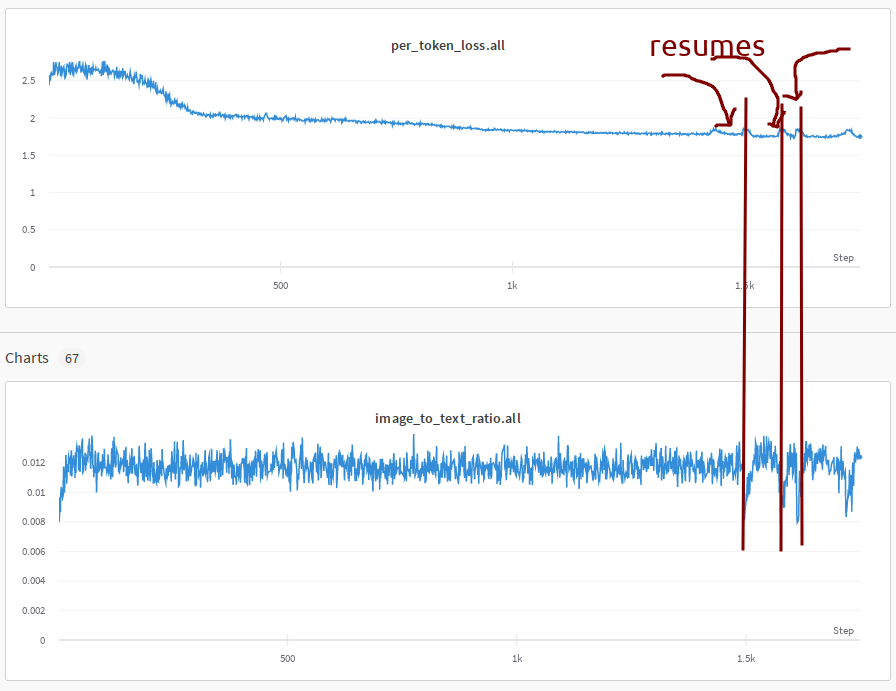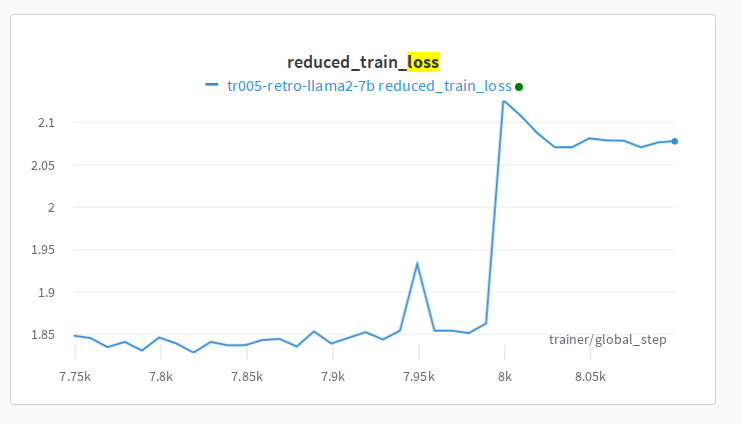Understanding Training Loss Patterns
Training loss plot is similar to the heart beat pattern - there is the good, the bad and you-should-worry one. After studying many training loss trajectories one develops an intuition to explain various loss behaviors during one’s training and how to act on those.
I warn you that the “Understanding” in the title of this section is overloaded since very often we don’t really understand why certain types of spikes happen. Here “understanding” refers to recognizing various patterns. We then usually have techniques to overcome the bad patterns and bring the training successfully to the finish line.
Thus you will find here a gallery of training loss patterns sometimes with real explanations, but more often than not educated guesses to what might be happening.
Please excuse the plot snapshots looking wildly different from each other as they have come from many sources over multiple years.
The good, the bad and the unexpected
Let’s look at some good, bad and unusual patterns.
A very failed training
Prior to starting BLOOM-176B training we did multiple experiments with the 104B model. We failed to figure out how to not diverge very early on.
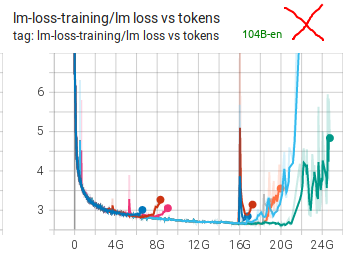
As you can see many attempts were made, many techniques were applied (see chronicles. We think the 2 main obstacles were using fp16 and data that had a lot of garbage in it. For BLOOM-176B we switched to bf16, used much cleaner data and also added an embedding layer-norm and that made all the difference.
An almost perfect training
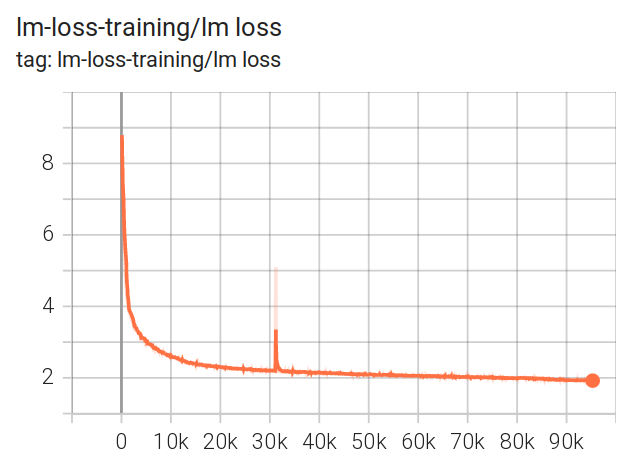
The BLOOM-176B training had a close to perfect training loss trajectory, with a single spike that has recovered in 200 steps.
You can inspect the TB to zoom in and check other plots.
This was the almost perfect training indeed. Lots of hard work was put into achieving this.
The grokking moment
Recently I was doing some performance testing and run a tiny global batch size of 8 on 8x A100 nodes on llama-2-7b trained from scratch. (w/ Deepspeed ZeRO-3 DP using HF Transformers Llama implementation)

Here one can observe a rapid loss improvement from 4 to 2.5 in just 480 samples after a very steady much slower improvements. My colleague Gautam Mittal called it the grokking moment. In just a handful of steps the model suddenly generalized to much better predict the masked tokens.
Normally one doesn’t see such a dramatic improvement when using a much larger batch size.
If we zoom in it took about 60 8-sample per iteration steps:
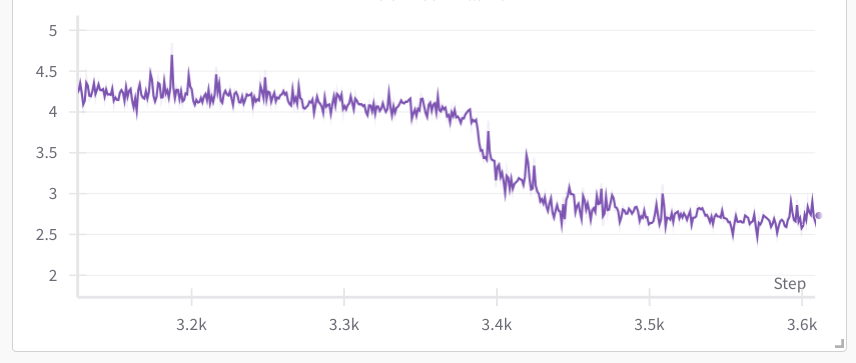
Main types of loss spikes
In general there are 3 types of loss spikes:
- Fast recovering spikes
- Slow recovering spikes
- Not fully recovering spikes
The spikes usually happen because of a bad data pocket, either due to badly shuffled data or because it hasn’t been cleaned from some garbage scraped from the websites.
While one would suspect that the batch before the spike was the trigger, but if you were to study that batch’s contents you are likely to find nothing unusual - quite often the problem starts developing many steps before and then most of the sudden it happens. But also it might not be easy to study the batch, since it could amount to a size of a book when the global batch size and the sequence lengths are huge.
Fast recovering spikes
Loss spikes can happen often and as long as they quickly bounce back to where they left off the training usually continues as if nothing happened:
Here is an example of the 13B pre-BLOOM training experiment:

As you can see there are many spikes, some of a huge magnitude but they have all quickly recovered.
Slow recovering spikes
Here is a slow recovering spike from the IDEFICS-80B training:

Not fully recovering spikes
This 104B model attempt spiked, started recovering but decided to not recover fully and instead started diverging
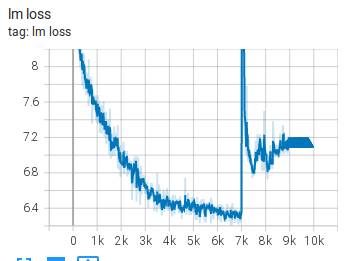
Here is another example from the IDEFICS-80B training:
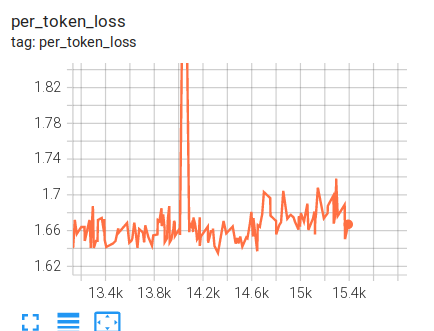
Non-spike diverging
Here are a few examples of diverging that didn’t go through a spike
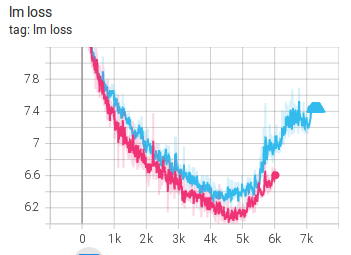
and here are a few more:
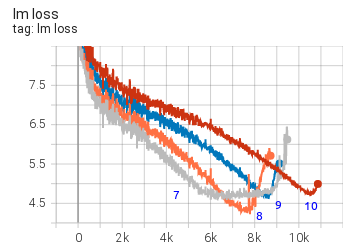
as you can see each restart makes a bit of progress and then the model diverges.
All these are from the 104B model attempts.
Multiple datasets spikes
During the IDEFICS-80B training we were using 2 different dataset types mixed together:

Legend: cm4 (high), average (mid) and pmd (low)
You can see that the loss spikes were sometimes happening simultaneously on both datasets and at other times only one of the datasets loss would spike.
Here the model was learning two different data distributions and as you can see it was not reporting the same loss and the spike behaviors on both data distributions. The pmd datasets loss was much easier for the model than the cm4 one.
Citation
@online{bekman2024,
author = {Bekman, Stas and Foreman, Sam},
title = {ML {Engineering}},
date = {2024-02-20},
url = {https://saforem2.github.io/ml-engineering},
langid = {en}
}
